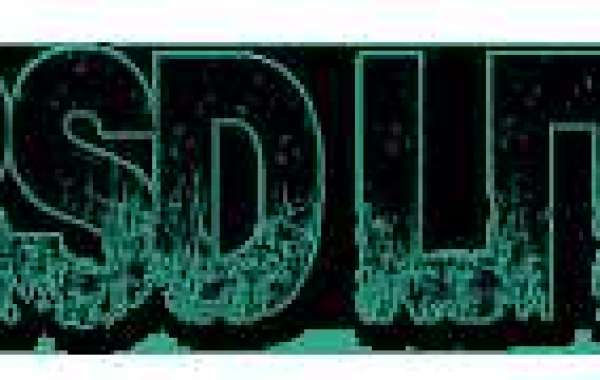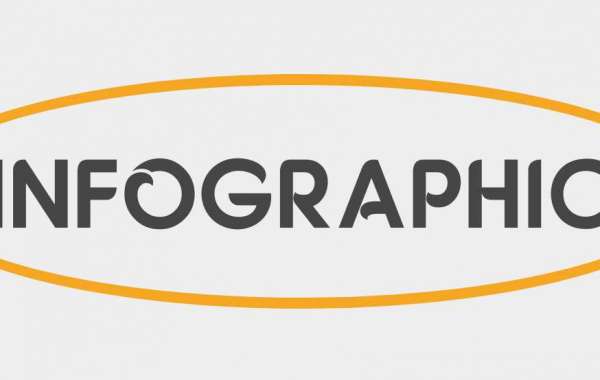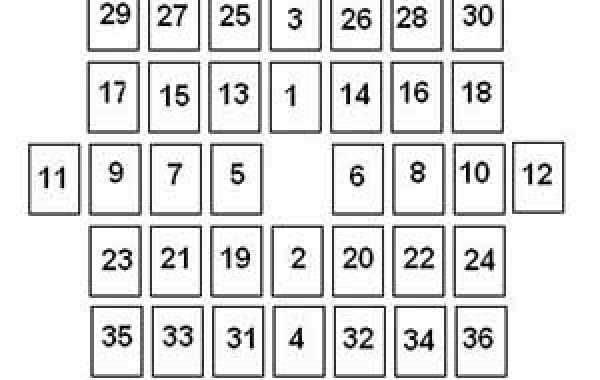The applications in the field of anti-counterfeiting and traceability are mainly anti-counterfeiting and traceability of tobacco and alcohol and food safety.
01. Anti counterfeiting traceability of alcohol
In today's society, counterfeit goods have become a worldwide problem. Driven by interests, counterfeit and shoddy products are increasingly rampant in the market. Especially for alcohol products, it has become one of the key points of counterfeiting and shoddy manufacturing by lawless elements, which has brought great threats to people's lives and even life safety, and also caused huge losses to enterprises. At present, the counterfeiting of alcohol anti-counterfeiting technology is not very difficult. Counterfeiters often master the anti-counterfeiting technology very quickly, and even forge it together with the technology developers who lack self-discipline, which gives the alcohol production enterprises a headache.
The advantage of UHF RFID wine anti-counterfeiting is that each label has a unique manufacturer code, which can not be modified and imitated. Use RFID technology to prevent counterfeiting, no mechanical wear and stain; The reader has a physical interface that is not directly open to the end user to ensure its own security; In terms of data security, in addition to the password protection of the tag, some algorithms can be used to realize security management in the data part; There is a mutual authentication process between the reader and the tag; The data storage capacity is large and the content can be rewritten for many times. The logistics and supply chain management system based on UHF RFID technology can also be established. Through this system, the whole process of production, storage, sales and delivery of each bottle of wine can be recorded, and the output, sales and other information can be automatically counted. At the same time, the anti-counterfeiting effect can be achieved, and the management informatization can be realized.
The use of UHF RFID anti-counterfeiting technology can prevent counterfeit products from entering the sales market, control product quality, supervise and manage sales personnel, formulate reasonable service strategies, strengthen market control and management, guide enterprise product design positioning and improve the timeliness of business decisions.
(1) Application process
RFID technology will optimize the production, circulation, sales and other aspects of the whole product. On the one hand, it can obtain accurate information flow in real time, improve the monitoring in the logistics process, reduce unnecessary links and losses in the logistics process, and reduce the safe inventory and working capital in each link of the supply chain; On the other hand, through the monitoring of the final sales realization, the consumer's consumption preference is reported in time, so as to help merchants adjust and optimize the commodity structure and obtain higher customer satisfaction and loyalty. The liquor anti-counterfeiting system runs through the whole process of liquor production, sales and circulation, data collection and information processing. The whole process is meticulous and can effectively realize anti-counterfeiting and prevent fake liquor from entering the market. The specific system scheme is shown in Figure 8-7.
Fig. 8-7 alcohol anti counterfeiting system
Electronic labels on wine packaging boxes: UHF RFID tags, as anti-counterfeiting labels, should be attached to the production process, attached to the wine bottles in the original wine bottle labels, and then put into the packaging boxes. The electronic label is a paper EPC label with identification information printed on the surface and permanent adhesive on the back, which is directly attached to the bottle. During the production of products, RFID anti-counterfeiting RF tags are placed at the corresponding positions of the products by manual or automatic methods, or the tags are placed in the product packaging box.
Fixed reading and writing equipment is installed on the production line to write data into the label and automatically record the information. A reading and writing device is placed at the end of the packaging production line. When the electronic tag passes through the reading and writing area, the reader will automatically read the tag ID number, write the EPC code of the liquor, and write other information (such as product offline time) in the user data area; At the same time, the reader can set a different access password for each tag according to a certain algorithm to prevent anyone from attempting to modify the data inside the tag. In addition, the server records the label information, and establishes a file (production time, wine type, etc.) for each bottle of wine for query. After completing the data writing, put the wine into the packing box for storage. Liquor production enterprises sometimes need to conduct random inspection on the produced liquor. Alcohol enterprises can use handheld devices to read the data in the electronic labels to ensure that the data has been correctly written, so as to conduct spot check.
Anti counterfeiting inquiry and sales management: dealers and retailers are equipped with handheld machines to check the authenticity of wine. The sales of alcohol is the most important link in the anti-counterfeiting process. Most fake wines enter the circulation of alcohol through the loopholes in the sales process. It can be stipulated that liquor dealers must be equipped with handheld machines, and the liquor delivered must be inspected to ensure that no fake liquor is mixed; At the same time, the sale of high-end liquor is often through large shopping malls, supermarkets, specialty stores, etc. it can be suggested that retailers also equip (or rent) handheld machines to test the authenticity of liquor. As consumers, they have the right to require retailers to check the authenticity of alcohol on the spot when buying alcohol. If they can read the data smoothly, It indicates that the bottle of wine is real wine (it is impossible to reuse the electronic label, so it can be ruled out that the illegal elements can remove the electronic label after recycling the old wine box and use it again to impersonate the real wine; in addition, the price of counterfeiting by using the UHF RFID system is too high for the manufacturer of fake wine to impersonate; the dealer's intentional introduction of fake wine may cause huge reputation loss and economic loss, which can also be ruled out) Yes, if the data in the label cannot be read, the consumer can refuse to buy. The distillery can establish an inquiry mechanism. The electronic tag data processed by the reader will be recorded in the server. The data processing system will link the web query system. Dealers, retailers or liquor buyers can query the ID number of the electronic tag through the communication network to identify the authenticity of the liquor.
(2) System characteristics
Supply process tracking: with the expansion of the scope required by retailers, more wine enterprises need to use EPC labels on pallets and containers at least. The system can record and track the operation of products in real time, accurately and completely, and can comprehensively and efficiently strengthen the management of production, transportation and sales of products, and provide various perfect and easy-to-use functions such as query, statistics and data analysis.
Wine storage management: use UHF RFID tags on the bottle neck of each bottle of wine to record the data such as placement position, product category and date; Through the label on the wine bottle, the state of the goods, including whether the temperature is suitable and the quality of the wine, can be known at any time according to the unique code of each product, so as to facilitate the warehouse management, and also immediately understand the products that need to be replenished, and facilitate the out of stock management. In the case of goods return and exchange, the data can be modified as long as it is imported into the system. Wine manufacturers can also use sensors to monitor changes in the ambient temperature of wine barrels that can affect the quality of wine.
Effective anti-counterfeiting function: in the process of wine sales, since the packaging cannot be opened on the spot to check its authenticity, this provides an opportunity for counterfeiters. However, the information in the electronic label on the wine bottle can be inquired through the UHF RFID system, so that the factory location, year, date of production, ingredients and other information of the wine can be clearly understood. Moreover, the tag chip is technically difficult and difficult to copy. After the liquor is filled, sealed and capped, the technology of printing at the joint between the lid and the container, printing the upper half of the electronic label on the lid and the lower half on the container. When the consumer opens the bottle cap, the printing on the bottle cap is destroyed, while the printing on the container is intact. The printing left on the container cannot be erased and forms a permanent mark to prevent the waste wine bottle from being used by illegal merchants to fill and impersonate.
Environmental adaptability: the electronic tag can adapt to various environments, and can correctly read data in light or dark, wet or dry conditions. No matter in the process of storage or supply, the electronic label will not be worn.
02. Food safety
In recent years, the frequent occurrence of food quality and safety crisis has caused widespread concern among consumers. This section takes tea safety as an example to introduce the case. To ensure the quality and safety of tea products, product traceability must be achieved. The "tea product safety traceability system" uses automatic data acquisition technology to uniquely identify and link the management objects of the supply chain links such as the growth, processing, storage and retail of tea raw materials. Once there is a safety problem in tea, it can be traced through these marks, so as to accurately narrow the scope of tea safety problems, find out the links where the problems occur, and even trace back to the source of tea production.
Application of UHF RFID system in every link of tea products
Production stage: the manufacturer stores the name, variety, place of origin, batch, pesticide application, producer information and other necessary contents in the electronic tag, records the information of the initial product and the production process with the UHF RFID tag, and quickly sorts the products with the information of the tag during the purchase of the products, and gives different purchase prices according to the different conditions of the products.
Processing stage: use the information in the electronic tag to sort the products, and only products meeting the processing conditions can be allowed to enter the next processing stage; For products entering the processing process, the information recorded in the electronic label is used to deal with different products in a targeted manner to ensure product quality; After the processing is completed, the processor adds the information of the processor, processing method, processing date, product grade, shelf life, storage conditions, etc. to the electronic label.
In the transportation and storage stage, electronic tags are used to store the fixed readers installed along the way to track the transportation route and time data of transportation vehicles. Fixed readers are installed at the entrance and exit of the warehouse to automatically record the incoming and outgoing of products. Many agricultural products have high requirements for storage conditions and storage time. Using the information recorded in the electronic label, we can quickly judge whether the products are suitable for storage in a warehouse and how long they can be stored; When delivering goods, select the products to be delivered first according to the storage time to avoid economic losses; At the same time, the use of UHF RFID can also realize the rapid inventory of the warehouse and help the management personnel understand the status of the products in the warehouse at any time.
In the sales stage: the merchants use the UHF RFID system to understand the status of the purchased goods and help the merchants implement access management. When collecting money, the use of UHF RFID tags can more quickly confirm the price of goods purchased by customers than the use of bar codes, and reduce the waiting time of customers. The merchant can write the name, sales time, sales personnel and other information of the commodity into the electronic label, and confirm the commodity when the customer returns and recalls the commodity. When there is a problem with the product, since the information of the production, processing, transportation, storage, sales and other links of the product is stored in the electronic label, the whole process can be traced according to the content.
(2) Logistics process
According to the actual needs of enterprises for product safety traceability, the system selects 8 links as the traceability control points, including planting, purchasing, primary processing, finishing processing, inner packaging, outer packaging, finished product inspection and distribution. The traceability identification of each control point is proposed, and the UHF RFID reader(click here) is used to identify each traceability control point to obtain relevant data.
(3) System structure
The system is divided into three main parts.
Enterprise product management system: through standardized identification, recording and query of the information of each traceability control point, enterprises can realize the information tracking and tracing of products from planting to sales, and achieve the purpose of accurate early warning of product problems in advance and rapid processing afterwards.
Product safety traceability management system: the government regulatory department understands the basic situation of the production enterprise, product traceability information, raw material source and product flow.
Data exchange platform system: the seller inquires about the planting place, fertilizer and drug use, production and processing, quality and safety inspection and other information of tea products.








